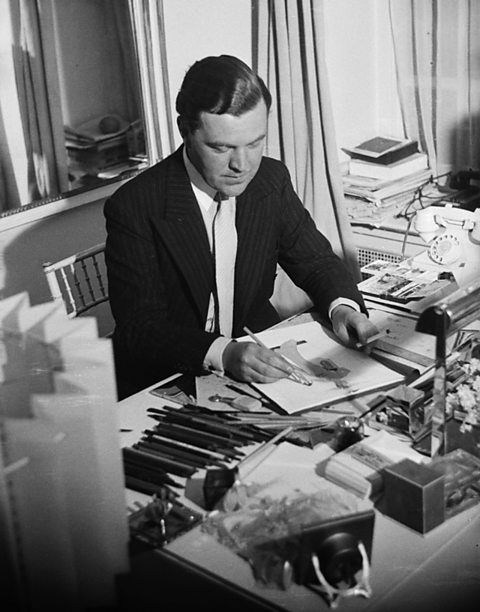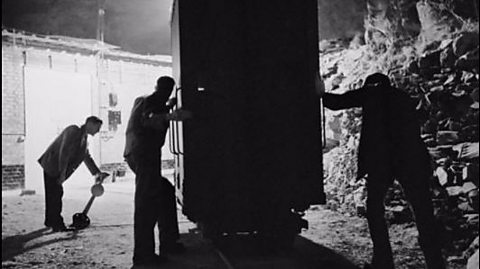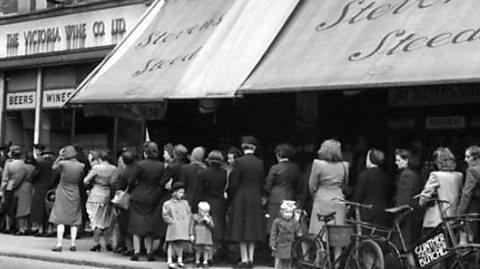From coupons to couture
The Second World War seems an unlikely time to have a fashion moment. Material was in short supply, clothes were rationed and regulations were introduced for everything from the number of pockets on a woman's jacket to the length of a man's sock.
But at the same time as imposing these limitations, the government was convinced fashion could help win the war β by keeping morale up on the ΒιΆΉΤΌΕΔ Front. It turned to Britainβs top designers to create clothing ranges that worked within these restrictions but didnβt skimp on style. The result was a profound shift in the British clothing industry that permanently changed the relationship between London's fashion houses and the high street.

National fashion service
Dictating value, not style
In 1942 'utility' fabrics were introduced β standard material produced in large quantities.
In the same year, strict 'austerity' regulations ensured clothes made the most economical use of this material. Pleats, turn ups and extra pockets were some of the fashionable flourishes deemed too extravagant for the war.
The Board of Trade were convinced utility and austerity did not have to mean mediocrity. In a move showing great imagination, they approached Londonβs most famous fashion designers for help.
Styled by the Queenβs dressmaker
Though more used to dressing the Royal family and Britainβs richest women, eight designers unveiled a collection of 32 βutilityβ outfits in autumn 1942. New silhouettes with streamlined tailoring made austerity attractive. The public loved them. The Daily Mail celebrated the fact that 'suburban wives and factory girls will soon be able to wear clothes designed and styled by the Queen's dressmaker'.
Before the war, clothing had been an unmistakable sign of social class. Now ordinary women could aspire to own items that reflected some of the glamour of the catwalk. For the working classes, mass production put better quality clothes within their budget for the first time.

Utility design takes off
The utility brand was a sartorial success. Browse the gallery below to find out how it changed British fashion forever.

Image caption, Three outfits from the 1942 collection. Under austerity regulations, skirts became shorter to save material. Designs by Victor Stiebel, Elspeth Champcommunal and Edward Molyneux.
1 of 4
CLICKABLE: Fashion for the war effort
Click or tap on the images to find out how these fashion items helped people in World War Two.
Learn more about this topic:
WW2: How did Britain hide its treasure from the Nazis? document
A look at the secret WW2 plan to save Britain's most valuable heritage from the Nazis and bury the priceless artworks underground in Manod, North Wales.

WW2: How did the British plan to celebrate VE Day? document
VE Day or Victory in Europe Day was on 8 May 1945, following Germany's surrender in WW2. But how did Britain plan for one of the greatest days in its history?

WW2: Could the rationing diet make you healthier? document
Find out what kind of foods were rationed during World War Two and whether or not they could make you healthier.
